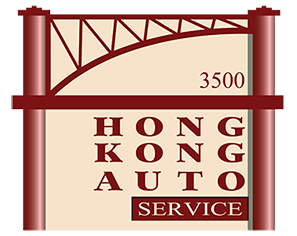Our 5 top tips for maximizing tire life
Ensuring your tires are up to snuff is vital for the safety of you and your passengers. Not only that, tires that are in poor condition or underinflated have a serious drag on your vehicle’s gas mileage.

A blown tire: one consequence of poor attention to tire maintenance.
Those considerations, plus the cost of new tires—a full four-tire replacement will cost hundreds of dollars and can approach the $1,000 mark—should be enough to motivate you to do everything you can to maximize tire life.
Fortunately, drivers can take several steps to extend tire life. Here are our Top 5 recommendations for maximizing tire life:
1) Maintain Proper Pressure: Underinflated tires negatively impact gas mileage. If that isn’t enough to motivate you to keep them filled to the correct pressure (measured in psi or pounds per square inch), then how about this statistic: Tires underinflated by 20 percent can slash tire life by up to 16 percent. Here’s another way to think about it: A set of tires that are 6 psi under correct level will cause those tires to “die” 10,000 miles before their time.
Tire pressure must be monitored regularly. The Tire Industry Association (TIA) recommends checking tire pressure at least once per month when tires are cold or have sat idle for a minimum of three hours. In addition to rubber meeting road, weather also impacts pressure: a 10-degree Fahrenheit temperature increase or decrease will raise or lower tire pressure by 2 psi, so it’s a smart idea to check pressure after abrupt changes in outside temperatures.
Underinflated tires wear excessively on the outer treads and, in extreme conditions, may even overheat. This could cause tire damage or a blow out. Overinflated tires wear too fast in the middle because the tire is only rolling down the road on that center tread.
2) Slow down: Tires get hotter the faster they travel; and the hotter a tire gets, the faster it wears. Not only that, but uneven tire wear is more likely at higher speeds due to changes in footprint shape. “Footprint,” also known as tire contact patch, is the area of the tire’s rubber that comes in contact with the pavement. That simple relationship means that a lead-footed driver could literally be burning up his or her tires way ahead of their intended expiration date. Punching it on the highway and traveling 75 mph vs. 55 mph could lead to as much as a 30% dip in tread life.
3) Rotate regularly: Front tires typically wear out faster than the rear ones. Turning, coupled with engine weight, wears down the shoulders of the front tires. Rotating (or moving) the front tires to the rear helps ensure all tires wear at about the same rate over the life of the tire. A general rule of thumb is every 5,000 to 8,000 miles, but four-wheel-drive trucks and SUVs tend to wear tires more unevenly. It’s a good rule of thumb to ask your Hong Kong Auto Service team if you’re due for a tire rotation each time you’re in for an oil change.
4) Stay balanced: Out-of-balance wheels don’t roll evenly. A telltale sign of this condition is a vibration or wobble at a certain speed ranges, such as from 25 to 35 mph or from 55 to 65 mph. Unbalanced wheels that are driven for an extended period will cause the tires to wear in a cupping pattern. To correct this problem, weights are placed on wheels.
5) Get aligned: Wheel alignment can be knocked outside of acceptable parameters due to several factors, including striking potholes. Tires are dependent on proper alignment to achieve their full lifespan. Learn more about why you should choose Hong Kong Auto Service for your wheel alignments.
